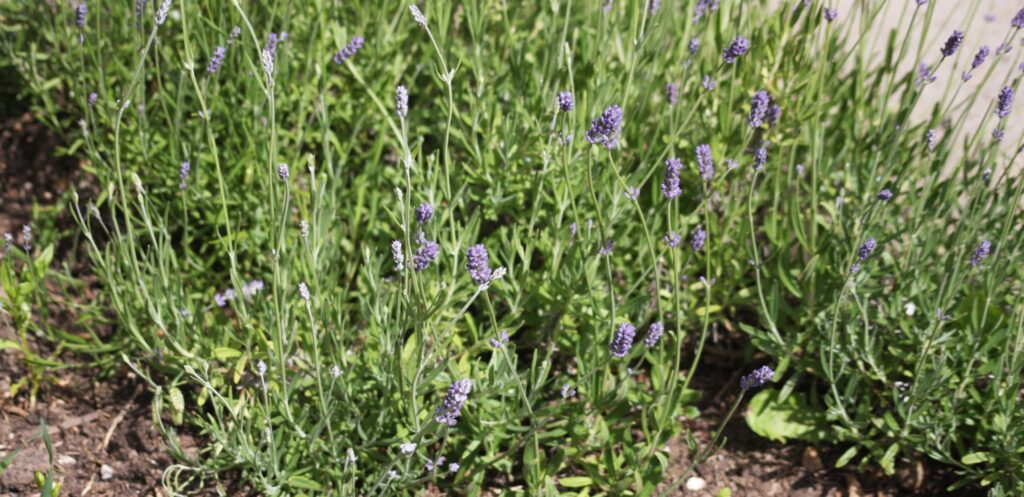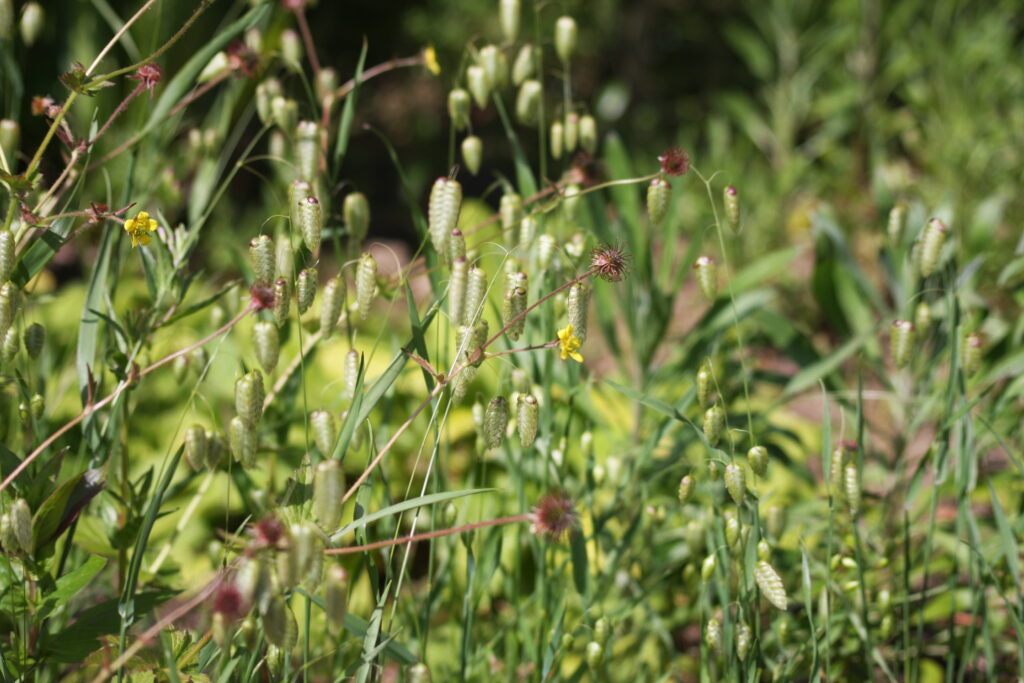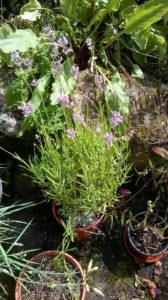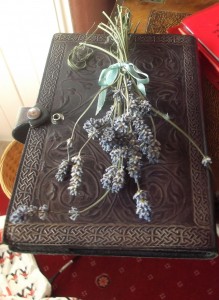
It is Midsummer Day and the cloud is thick and heavy, though it is quite warm, and there hasn’t been much rain. The burn is quiet and the muddy banks are drying out. The pollen count is very high, so I am not even thinking of going into the garden until the next shower. The roses are in full bloom now and the tutsan bush and the dyer’s greenweed make a bright flash of yellow among all the leafage of the front garden, where the lavender borders are just thinking of coming into flower.
This week’s harvest has been the quaint stems of quaking grass:

which will dry so they will last all the year round. I will add the heads of poppy and teasel, when they ripen – their pale neutrals will make an airy display on my window sill. The poppies are at their best, though they seem to flower erratically, never more than two or three at a time, and dropping their petals within twenty-four hours, so there is a constantly moving flash of fire against the green.
The weather has been so cold at nights until the last week that the cuttings I took have not yet rooted and the tomatoes are looking puny and miserable. The herbs are thriving, however – the vervain and wormwood I planted out have taken well, and chamomile, yarrow, honeysuckle and marigold are on the edge of flowering. And finally we have meadowsweet in flower in the dampest part of the front garden – I didn’t feel properly settled in this garden until the meadowsweet and lavender have made themselves at home, so this feels significant!
The cold seems to have been tough for the birds too. Although this year’s broods fledged about when I expected, they are still coming to the feeders in great numbers, which seems to show that there isn’t so much alternative food about. We have a great spotted woodpecker too, conspicuous among the drab juvenile starlings by its flashes of scarlet, but the magpies seem to have intimidated the robins and goldfinches.
On the solstice we went to Cathkin Brae to watch the sunset. It was a disappointingly cloudy night, and the midges were out in force, but there were two thrushes singing against each other from the tallest trees and the air was full of the scent of elderflower. Let’s hope for less cloud and more sun this summer!





 Once we had a bay tree. At its best, it was about seven feet high and as vigorous as anything in the garden. It survived temperatures of -20 degrees, and there was a blackbird’s nest in it. Unfortunately, however, it took up a lot of room and shaded out everything else in the herb patch, so it had to go. We cut it down, dug up roots and punched copper nails into the stump, but for years it kept coming back, and this is one of the suckers thrown up in its last days. For all the vigour of the stems, they don’t root particularly easily, and to be honest, this is my sole success.
Once we had a bay tree. At its best, it was about seven feet high and as vigorous as anything in the garden. It survived temperatures of -20 degrees, and there was a blackbird’s nest in it. Unfortunately, however, it took up a lot of room and shaded out everything else in the herb patch, so it had to go. We cut it down, dug up roots and punched copper nails into the stump, but for years it kept coming back, and this is one of the suckers thrown up in its last days. For all the vigour of the stems, they don’t root particularly easily, and to be honest, this is my sole success. This is a plant I bought when I was feeling pessimistic about the prospects of the rooted suckers. It’s doing pretty well too, a little ahead of my own plant. I’ll keep them in pots, clipped small, and harvest the leaves regularly.
This is a plant I bought when I was feeling pessimistic about the prospects of the rooted suckers. It’s doing pretty well too, a little ahead of my own plant. I’ll keep them in pots, clipped small, and harvest the leaves regularly.